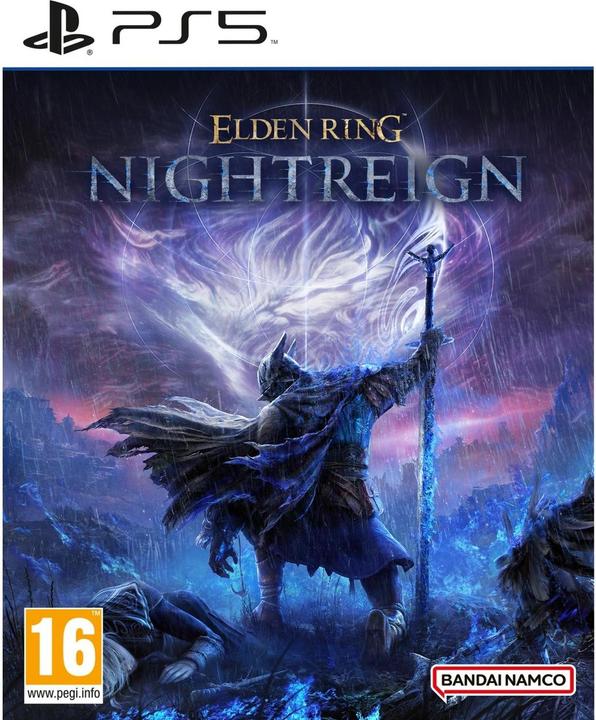

"Elden Ring Nightreign" tested: This is how the co-op "Souls" plays
Although the introduction to "Elden Ring Nightreign" was anything but pleasant, the game completely captivated me.
«Elden Ring Nightreign» comes from the legendary studio Fromsoftware. It is known for hard-hitting single-player action games such as the «Souls» series, «Sekiro: Shadows Die Twice» and most recently «Elden Ring». The first foray into the multiplayer realm therefore unsurprisingly divides opinion.

Source: Fromsoftware / Bandai Namco
The start is tough and merciless
As soon as I start «Elden Ring Nightreign», the game explains the basic controls in a short tutorial. In addition to familiar elements, such as attacks using the shoulder buttons, new, class-specific commands are added. These are usually more powerful than standard attacks. For example, I transform into a beast, jump high into the air or fire an arrow that knocks everything in its path aside.
The basic gameplay is similar to that of «Elden Ring». I control a character who has to defeat enemies. I do this with melee weapons such as swords and hammers, ranged weapons such as bows or wands, which I use to cast magic. Standard opponents fall quickly, the boss fights are usually challenging. As I deal out blows, I have to defend myself with a shield or dodge in time. The high level of difficulty, coupled with fascinating game worlds and successful gameplay, has many fans. «However, Nightreign» plays much more quickly than «Elden Ring».
The story is told in the usual cryptic manner: I play a Nightfarer who defeats the Nightlords and thus brings order back to the Interlands. You'll learn the rest of the story from lore YouTubers like VaatiVidya. In general, it's impressive how many details about the game that Fromsoftware only hinted at in a codex entry have already been discovered. For a detailed gameplay overview, I recommend videos like the following:
«Nightreign» differs from many other Fromsoft and «Souls» games in that I don't create my character myself. Instead, I choose one of six classes (eight in total if I unlock the two secret classes after the first big Nightlord boss). They each have an ability with a cooldown and an ultimate attack that I charge up by hitting enemies. For example, I can mark enemies so that they take more damage, turn myself into a raging beast or summon a pillar of stone from the ground that stuns everyone in its vicinity.
In addition, the status values of the classes are fixed, as independent levelling is no longer necessary. Instead, my stats increase automatically when I raise my level in a place of grace.
- Wächter: Der «Tank» unter den Klassen. Der Wächter zieht die Aufmerksamkeit seiner Gegner auf sich, damit seine Verbündeten unbesorgt Schaden anrichten können. Mithilfe seiner Fähigkeiten teilt er auch selbst aus.
- Einsiedlerin: Die typische Zauberin, die nicht nur eine gute Skalierung in Magie-Werten hat, sondern dank ihrer Fähigkeiten ihre Magie-Leiste auch ohne Hilfe von Gegenständen wiederherstellt.
- Eisenauge: Das Eisenauge ist die Fernkampf-Klasse, die ohne Magie auskommt. Mit seinem treuen Bogen ausgerüstet, teilt es zuverlässiger und vor allem einfacher Schaden als bei bisherigen «Souls»-Spielen aus. Seine Fähigkeiten wie der Marker machen Gegner anfälliger für Schaden und ermöglichen es ihm, seine Gefährten zu unterstützen.
- Räuber: Der Räuber kann einiges einstecken, teilt aber vor allem mit seinen schweren Zweihandwaffen langsame und heftige Schläge aus. Mit seinen Fähigkeiten bringt er seine Feinde zusätzlich ins Wanken.
- Exekutor: Der Exekutor richtet mit seinem Katana eine Menge Statuswert-Schaden an, wenn er nicht gerade damit beschäftigt ist, die Schläge seiner Gegner zu parieren. Mit seiner ultimativen Fähigkeit wird er zum Biest und haut noch mehr rein.
- Gräfin (freischaltbar): Die Gräfin teilt kleine, aber zahlreiche Hiebe mit Geschicklichkeitswaffen aus. Wenn sie mal eine Verschnaufpause braucht oder ihre Verbündeten unterstützen möchte, macht sie mit der ultimativen Fähigkeit die Gruppe unsichtbar.
- Gespenst (freischaltbar): Das Gespenst ist eine Beschwörerin. Wenn sie einen (oder alle) von insgesamt drei Wesen losschickt, macht es wenig aus, dass ihre Lebensleiste sehr klein ist. Mit den richtigen Gegenständen zur Magie-Wiederherstellung heizt sie Standard- sowie Bossgegnern ordentlich ein.;]]
After the tutorial, I'm thrown into a kind of hub world from which I start a typical round of «Nightreign». Even with diligent reading before playing and the support of my co-op partner, this turns out to be frustrating. The many key commands overwhelm me. I have no idea where I'm supposed to go and after a few minutes, I and my group are soundly thrashed by the first small boss. Two hours pass before I understand the principle and two more before I complete my first expedition.
This is what a typical run at «Elden Ring Nightreign» looks like
I am always thrown into the same area with my group Roguelike, where only the locations of the enemies and items change. The aim is then to defeat one of eight final bosses in a total of three in-game days (which last just under an hour)
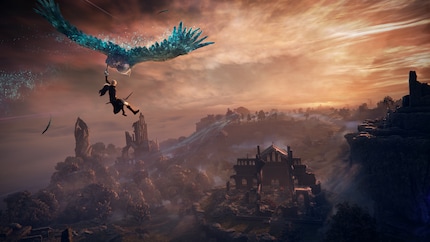
Source: Fromsoftware / Bandai Namco
To do this, I run through points marked on the map where enemies and treasures await me. For example, I clean out camps, improve the healing of my Estus bottle or take on smaller bosses. In contrast to normal enemies, these give significantly better rewards and more runes, which I need to level up.
This all happens under time pressure. Similar to battle royale games, a circle on the map shrinks. I have to stay in this circle because I'm constantly taking damage outside of it. At the end of the day, the circle centres on a golden tree where a random boss enemy appears. One highlight is that well-known bosses from other Fromsoftware games appear, such as the Gaping Dragon from the first «Dark Souls». If I defeat it, I get lots of runes, which I need to level up, and one of three rare, random rewards. Then it's on to day two.
The second day looks like the first and takes place on the same map. That's why I visit other, ideally more challenging points on the map and improve my character so that it is prepared for the boss fight at the end of the day.
The course of the third and final day is different. Here I redeem my last runes for levelling and get ready for the final boss fight of the run. This corresponds to the Nightlord I selected before the expedition. If I defeat it, I tick off one of a total of eight bosses.
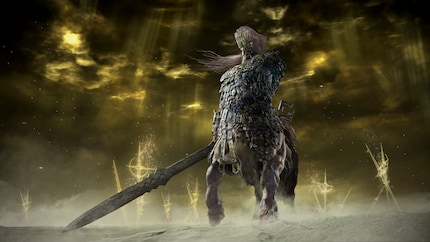
Source: Fromsoftware / Bandai Namco
A big «Oh dear» for the multiplayer game
Once I not only understand the principle but also internalise it, the individual runs run much better. I finally know how best to coordinate with my co-op partner, which locations I prefer to tackle earlier and which can wait until the second day.
The multiplayer also remains a problem later on. Two points bother me about it. On the one hand, there is no cross-play functionality. For a game that will be released in 2025 for the latest generation of consoles and PCs alongside PS4 and Xbox One, this is incomprehensible.
What I and numerous other people find even more annoying is the limitation of the co-op mode to one or three Nightfarers. What I haven't revealed yet: Even though «Nightreign» is primarily a co-op experience, I can also embark on an expedition alone. If I play this way, I find it easier to run through the map, but I have more problems with the end bosses. I am the only enemy they focus on and my mistakes are punished even more quickly. If I play alone, I also lose the option to revive myself. In the group, I can attack fallen members to revive them in this way.
A dedicated two-player mode is completely missing. Although I can start an expedition with two players, a randomly selected player joins me. Even though I'm glad that I can at least play with my co-op partner in this way, the catch quickly becomes apparent. The third player has a significant impact on the gaming experience.
This is a decision that, like the lack of cross-play, I can't understand. Even if Fromsoftware wants to add the two-player mode after the criticism at some point, its absence when the game is released is irritating.
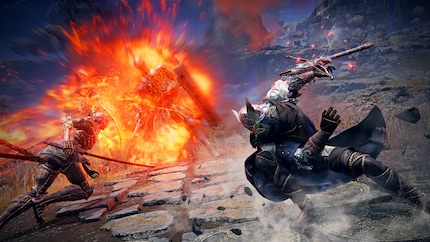
Source: Fromsoftware / Bandai Namco
When a pro joins, he or she marks fixed points on the map and skilfully follows the paths to them. During boss battles, the person deals a lot of damage or supports us. This is what fun expeditions look like, which usually end in victory over the final boss on the third day.
However, it happens at least as often that a newcomer ends up in our party, constantly dies on the map before the boss fight and spends more time on the ground than in battle. Directly after the launch, this is still acceptable. But when my third run in a row comes to an end at the first big boss, I'm frustrated. The whole thing goes so far that Nightfarers joke on the internet that the real difficulty in the game lies in finding a third party member.
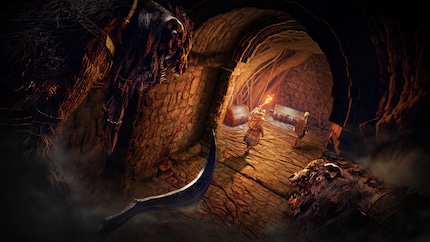
Source: Fromsoftware / Bandai Namco
At least I'm relieved that my gaming experience with a 3070 graphics card on the PC is mostly smooth in multiplayer. After reading in pre-release reviews that the game was laggy even on modern consoles, I feared the worst. Apart from a few delays with an end boss, I have been spared from this. Occasionally, the enemies do jerk across my screen. But that's probably more down to the internet connection.
Despite frustration, the motivation spiral comes
Although the beginning can be overwhelming even for «Souls» veterans and the multiplayer experience leaves a lot to be desired in some areas, after defeating the first Nightlord «it clicks». I'm already caught up in the motivational spiral of «Nightreign». As soon as I get the hang of it, I want to hunt down the rest of the Nightlords.
As a roguelike, the principle of the runs always remains the same. I hardly ever unlock continuous progress. Instead, there are only relics that I use to equip the classes before an expedition. These have three free, colour-coded slots that I fill. This allows me to improve status values, but also unlock special, class-specific properties.
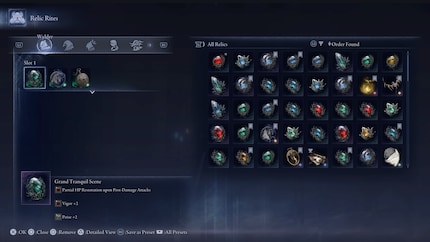
Source: YouTube / Oroboro
Other than that, the measurable progress remains manageable. «Nightreign» also has no endgame worth mentioning. Once I have defeated all eight Nightlords, I only go on expeditions for fun or to unlock class skins. The variety comes from the runs themselves.
«Elden Ring Nightreign» was provided to me by Bandai Namco. The game has been available since 30 May 2025 for PC, PS4, PS5, Xbox One and Xbox Series X/S.
In a nutshell
"Nightreign" offers hard-hitting co-op fun - despite a tedious start
"Elden Ring Nightreign" plays faster than single-player "Souls" games. The eight classes ensure this.
Groups that coordinate effectively have the best gaming experience. This allows you to efficiently run through the constantly reshuffled points on the game map and strengthen your characters with the help of random rewards.
I can understand the critical voices about "Nightreign". Although I experience enough frustration with the game myself due to the overwhelming start and the lack of options in multiplayer, the familiar "Souls" feeling grabs me. Just like my inner bastard, who won't let "Souls" bosses go undefeated. This makes me want to put a stop to the Nightlords at all costs. After the tough start, it's also fun to run through the map and beat up standard enemies and bosses.
Until the release of the next Fromsoftware game, "Nightreign" manages to satisfy my "Souls" hunger. And otherwise the DLC is probably not far away either.
Pro
- Real "Souls" experience
- successful combat system
- Challenging boss battles
- New skills usefully expand the known repertoire
Contra
- The beginning in particular can be overwhelming
- No cross-play and no two-player mode

I wrote my first text about video games when I was eight years old. I haven't been able to stop since. The rest of my time is spent on my love for 2D husbandos, monsters, my cats and sport.
Which films, shows, books, games or board games are genuinely great? Recommendations from our personal experience.
Show all

